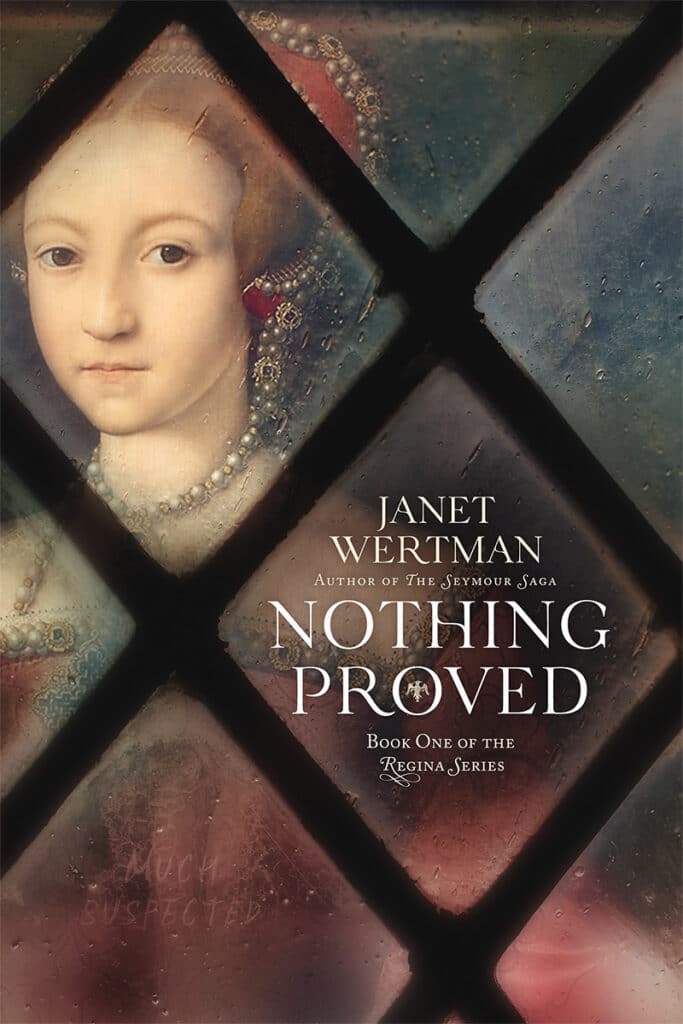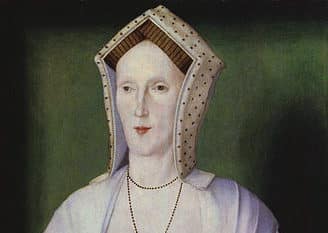
[Spoiler alert – this is not for the squeamish! The execution of Margaret Pole is one of the darkest marks in Henry VIII’s reign – and considering how dark some of them were, that is saying a lot…]
Born Margaret of York, Margaret Pole was the daughter of George, Duke of Clarendon (brother of King Edward IV ad King Richard III) – which made her, along with Elizabeth of York, one of the few remaining Plantagenets after the War of the Roses. Margaret loyally served Catherine of Aragon for years…then continued to support her after the annulment, which started her troubles. She might have gotten away with it, but her youngest son Reginald Pole had become a Cardinal in the Roman Catholic Church. He wrote against the King, denying Henry’s religious supremacy in England and urging others to do the same. In late 1537, Reginald supported the insurgents in the Pilgrimage of Grace, working with the Pope to try to persuade France and Spain to help replace Henry with a Catholic ruler (the plan was that he would be released from his vows to marry the King’s daughter Mary, combining their claims).
Because Reginald was smart enough to remain outside England’s reach, Henry took his anger out on the man’s relatives. In November 1538, Margaret and her children were arrested for having corresponded with Reginald. Her manor was searched at the time, but then six months later Cromwell “found” a tunic bearing the Five Wounds of Christ (the banner adopted by the Pilgrims) and used it as evidence that she supported the treasonous plan to place her son on the throne. She was sentenced to death, and held in the Tower for two years.
Henry finally decided to execute his frail, 67-year-old relative in 1541. This is when the story gets bad. Margaret Pole continued to deny that she was a traitor – and based on that, refused to lay her head down on the block. Forced down, she continued to struggle and try to free herself. That would have been difficult for any executioner, but hers was said to be a “blundering youth” who missed. Many times. The Calendar of State Papers contains a report that he “hacked her head and shoulders to pieces” – it took eleven blows to finally decapitate her.
So perish all the King’s enemies….
***
If you like my posts, you’ll love my books! Nothing Proved is my newest, the story of Elizabeth Tudor’s journey from bastard to queen. Get it now through your favorite platform – Amazon, Barnes & Noble, Kobo, Apple, or your own independent bookstore

(PS Already read it? Did you love it? Then please review it – even just a stars rating! It makes a huge difference in helping new readers find them and would mean the world to me!)world to me!)

Another interesting post, thanks. One small point, George was Duke of Clarence . In the 1880s Margaret was declared Blessed by the Catholic church.
I loved the way Cromwell advised her in the BBC Wolf Hall..
I agree! They handled that beautifully
What a sad end. Great article. I wrote on this too. The poor woman saw the end of the Yorkist dynasty, her maternal family’s downfall, then her father’s and now it was her turn.
Loved your article Minerva!
Just one of the hundreds of reasons I loathe Henry and Cromwell. If either of them had a redeeming quality between them, I must have overlooked it. Nevertheless, a very good article.
Actually, Cromwell was dead by the time this happened! And I hope to change your mind in Jane the Quene – my critique group still likes him, even after the scene of Anne’s execution!
[…] botched execution was one of the worst examples of Henrician justice (you can read about it in my May 27 blog post). Reginald was relatively quiet after that, though when Mary did come to the throne, she named him […]
Appreciation to my father who told me about this blog, this website is really remarkable.
I confess I really like this era, BUT, Do you have anything in 13th century *1200s – about 1215 or so) in Occitania? I am researching material for a story set in this era.
Thirteenth century Occitania sounds interesting but that’s not my thing…sorry…I do hope you enjoy the Tudor stuff you find here!